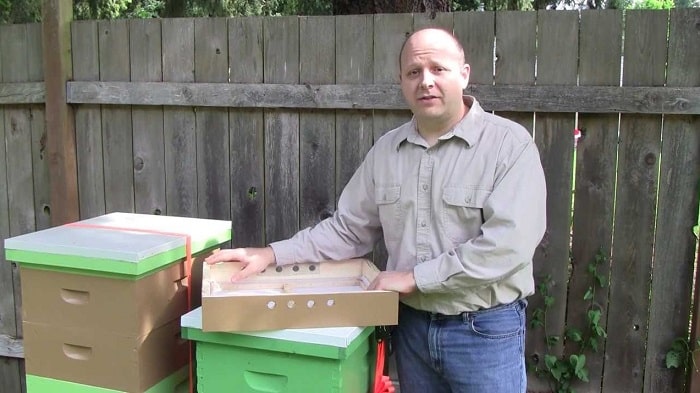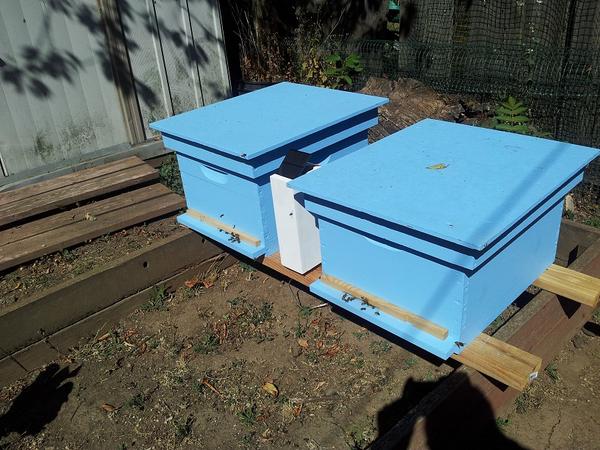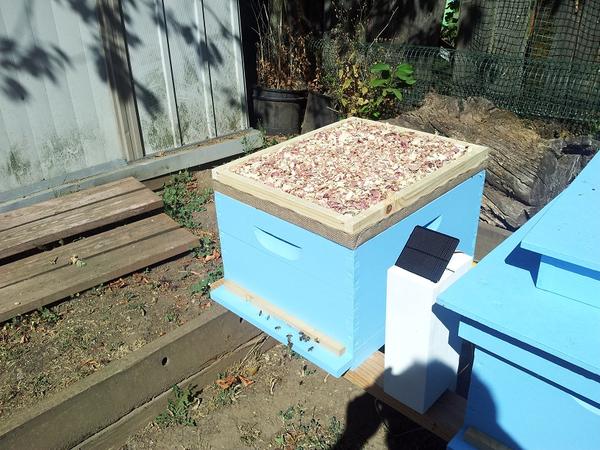As a beekeeper, you already know that too much moisture and humidity in the hive is never a good thing. Especially in cooler weather when the bees are more vulnerable to harm and death due to living in a wet environment. Moisture control in beehives is essential for all beekeepers. It can be accomplished with various tools such as moisture boards or quilt boxes.
Beginner and experienced beekeepers alike can construct a quilt box for their own use. The procedure necessitates some woodworking and metalworking skills, as well as a few tools. This guide will teach you how to make a quilt box for a beehive and how to use it for beekeeping.
The beehive moisture issue
Humidity in the hive is a major issue for beekeepers during nearly all seasons of the year. However, the problem is more pronounced during the winter and other wet times. Moisture collects on the hive’s cool surfaces. When water vapor comes into contact with a cold surface, it condenses and can form drops.
The inner shell of the honeycomb is the primary condensing surface. Controlling the humidity in the hive is essential to avoid harmful condensation. Bees can die if they encounter cold water. It has the ability to quickly kill an entire colony of honey bees.

Read more:
Moisture control in a traditional Langstroth beehive
To control humidity in a Langstroth hive, beekeepers rely on ventilation. The honeycomb design features an inner lid on top of the honeycomb box, followed by a top lid. Moisture condenses on the inner lid of the hive and drips back into it. Excess moisture is pushed out of the hive by air flowing in from the outside. The humidity of the hive can change several times during the day.
- Depending on the weather, bees ventilate the hive to cool or heat it. Their actions, however, are sometimes insufficient or impossible to carry out, such as during the winter.
- Another way to control humidity in the hive is to use wood to construct the hive. By sucking moisture from the air, dry wood helps to regulate humidity. When the air is dry, the wood emits moisture into the atmosphere. This action occurs in a hive due to wooden honeycomb boxes and other components.
These two natural moisture control methods are frequently insufficient. Condensation is a common problem for honey bees in cold-weather areas. Wet weather causes the hive to accumulate an excessive amount of moisture. Beekeepers must assist bees in surviving the winter and wet weather so that they can thrive in beekeeping.
Improving beehive moisture control
To improve humidity control in the hive, you can employ a number of techniques. These include the use of duvet boxes, absorbent blankets, and moisture-proof boards.
These methods are based on the same principle. They are based on the fact that dry vegetation can absorb moisture from the air and then push it back out when the air is drier. Pine needles, wood chips, or newspapers can all be used as wood components. Hay and a variety of other materials, including grass, can also be used successfully.
Moisture control in beehives using quilt boxes
Beekeepers strive to use the best quilting materials and adhere to the best construction practices in the quilt box. Most beekeepers prefer to use wood planers and pine needles. The duvet box is secured with wood. A guardrail on one side of the box keeps the quilting material in place, preventing foam particles from falling into the honeycomb frame.
Honey bees are unable to enter the duvet box. If you want a top entry for bees, consider using a feeding pad in conjunction with your duvet box. Feeding pads allow access to the hive from the top. The quilting material absorbs moisture from the hive’s air. Moisture is retained in the material until it is released into the atmosphere. Moisture will not escape from the duvet box during prolonged cold spells of several days or more. It can accumulate and saturate the quilting material.

Using a beehive quilt box for insulation
Quilt boxes can be used for more than just humidity control. Quilted fabric is not typically a good heat conductor. It creates an insulating layer between the hive’s interior and the environment just outside and above the hive.
Additional insulation can be placed on top of the quilted box. It is preferable if a quilted box that also serves as an insulator is deep enough to provide substantial insulation to the hive. A deeper duvet box separates the air inside and outside the hive. It prevents heat loss more effectively than a shallow duvet box.
- The thickness of your quilt box should not be less than 4 inches. It can be up to 8 inches thick in very cold climates where spring is wet and winters are harsh.
- In warm climates where bees can easily control humidity, beekeepers can use a thin layer of quilting material in their beehive moisture quilt boxes. For light use of the quilt box, 2 inches of properly packed quilting material is sufficient.
How to build a quilt box for a beehive
Best to make a 1/8-inch stiff quilt box on the bottom of a shallow honeycomb box. You should use thinner wood than the wood in the honeycomb box. This allows the telescopic cover to position easily on the duvet box.
Materials
You need some of the following tools:
- A hammer
- Wood staples and stapler
- 1/8 inch hardware cloth
- Screen mesh
- Drill and bits
- Screws
- Shallow beehive box
- Paint
Specific instructions
- Cut stiff fabric at least 1 inch larger than the shallow honeycomb box you intend to use. It enables the stiff fabric to be easily tucked into place. To form a pan when stacking cakes, fold ½ inches on each side.
- Drill some ventilation holes into the sides of the duvet box. To prevent rainwater from entering the box, you should place them perpendicular to each other.
- Use mesh to screen the holes on the inside of the box so that insects cannot crawl inside through the ventilation holes. There can be two holes on each side of the quilt box and one hole on each short side.
The benefits of using a quilt box for a beehive
- This is a very effective device for controlling humidity in beekeeping. A quilt box will control humidity to prevent condensation from forming in the hive.
- Using an insulated duvet box helps honey bees save food resources.
- Using a humidity-controlled duvet box saves money that can be put towards other aspects of the beekeeping operation.

Disadvantages of using a quilt box for a beehive
- You should monitor the humidity in the quilt box regularly. Moisture that accumulates in quilted material can cause it to decompose. This is not good for the hive’s health.
- The honeycomb blanket box can be a habitat for insects, parasites and other organisms that harm honey bees.
- Assembly of a beehive quilt box can be difficult for some beekeepers. Even using one that is ready to go into the hive can be problematic if the beekeeper is unfamiliar with the blanket box.
Conclusion
Quilt boxes are excellent beekeeping equipment for controlling moisture. They aid in preventing condensation in the beehive. The quilt box also provides insulation for the beehive, which honey bees appreciate.
You need to care and maintain the quilt box properly. You should inspect it on a regular basis to ensure its structural integrity and that no insects are hiding in the quilt box. This tutorial on how to build a quilt box for a beehive is suitable for both novice and experienced beekeepers.
